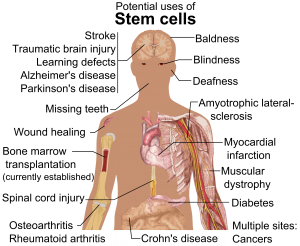Stem cell transplants have the ability to treat approximately 80 different types of diseases and disorders. These include certain types of cancers such as leukemia, bone marrow deficiency diseases, aplastic anemia (the lack of normal blood cell production), and inherited immune system and metabolic disorders. Doctors have the tough decision of figuring out what the most appropriate course of treatment is for patients who are suffering from these diseases and disorders. Specifically, for those who require a stem cell transplant, doctors must decide whether to use stem cells that are transplanted from a donor’s bone marrow or from their peripheral/circulating blood stream. New research has revealed that patients who have received a bone marrow transplant report an overall better quality of life compared to those who received a peripheral blood transplant. The patients who are receiving these potentially life-saving transplants are already very sick and therefore would want to maximize the chance that their transplant procedure will not only increase their life expectancy, but also their overall quality of life.

Potential Uses for Stem Cells. https://upload.wikimedia.org/wikipedia/commons/0/09/Stem_cell_treatments.png
A specific type of complication that arises and that is common side effect of post-transplantation is called graft versus host disease (GvHD). GvHD occurs when newly transplanted donor immune cells attack the recipient’s body. The results from the new research conducted finds that patients who received a bone marrow transplant overall experience fewer symptoms of GvHD and self reported better psychological well-being post transplant. These findings are quite important as the doctor’s main objective post transplant is for the patient to be healthier than they were before they received it. Therefore, I think it would be beneficial for follow up research to be done so it is certain that all stem cell transplants are being done with the patient’s best interests in mind, including their long-term health.
A video of patients and transplant experts that explain the basics of a blood or marrow transplant.
Currently, donor stem cells are extracted from the peripheral or circulating blood stream about 80% of the time, while the other 20% time it is collected from the bone marrow. This is because peripheral blood stem cell donation is a much less invasive procedure and is similar in risk compared to a regular blood donation. However, donors who are providing stem cells from their bone marrow are often put under a general anaesthetic and feel a small amount of discomfort or pain in the hip region, which can be compared to the sensation of falling on ice. It is important to keep in mind that patients who are desperate for these stem cells are in a great amount of pain and therefore put it into perspective, the small amount of discomfort felt from bone marrow donation is nothing compared to the amount that the patient who needs them feels.
Regardless of whichever method of transplantation scientists agree to be the best, both are providing life saving assistance to those with life threatening diseases and disorders. I hope that everyone reading this will consider signing up on the National Stem Cell registry and becoming someone’s second chance at life.
Rashmeen Kambo





